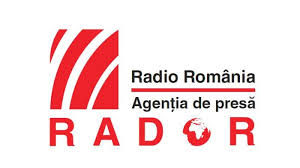The economy of the EU seems to have overcome the successive crises of the past few years.
The COVID-19 pandemic, skyrocketing energy prices, steep inflation and the consequences of the war started by Russia in neighbouring Ukraine were as many blows to the economy of the EU countries.
And still, they seem to have absorbed these successive shocks and to get back to a positive trend. The European Commission has announced that the bloc’s economy performed better than expected, with a one per cent growth of GDP in the first 3 months of the year.
Of the 27 member states, Romania is expected to see a 4% economic growth this year, one of the best in the EU. Positive factors include a drop in energy prices back to the level reported 2 years ago, a resilient labour market, a rise in consumption and investments.
The EU economy, experts say, has managed to contain the negative impact of Russia’s war of aggression against Ukraine, and coped with the energy crunch by quickly diversifying supply sources and by reducing considerably its natural gas consumption.
The significant drop in energy prices has ripple effects across the economy, leading to falls in production costs. In turn, consumers get lower energy bills, although private consumption is expected to stay low as long as salary increases remain below the inflation rate.
However, the inflation rate dropped in the first quarter of 2023 and it may reach 7.3% in April and 5.8% towards the end of the year, says Radio Romania’s correspondent in Brussels, who looked at the European Commission’s spring economic forecasts.
The EU Commissioner for Economic and Financial Affairs, Paolo Gentiloni, acknowledges negative aspects, such as the rise in interest rates and tighter conditions for loans, but says that, rather than a weakness of the banking system, this is an adjustment to post-crisis signals.
Another major element for the European economy is the implementation of post-Covid national recovery and resilience plans, which are basically capital injections, with an average absorption rate of 3% of GDP. According to the EU Commissioner, by 2024, recovery and resilience plans will have amounted to 3.5% of Spain’s and Greece’s gross domestic product, nearly 3% in Croatia and Portugal, 2.5% in Slovakia and Italy, 2% in Romania and Bulgaria, 1.5% in Poland and Hungary and 1% in France and Slovenia.
The Union’s labour market is expected to have a moderate response to the slower economic growth rate. Employment is predicted to go up 0.5% this year and 0.4% in 2024, with the unemployment rate estimated to stay at little over 6%.
(Bogdan Matei, Radio Romania International)











